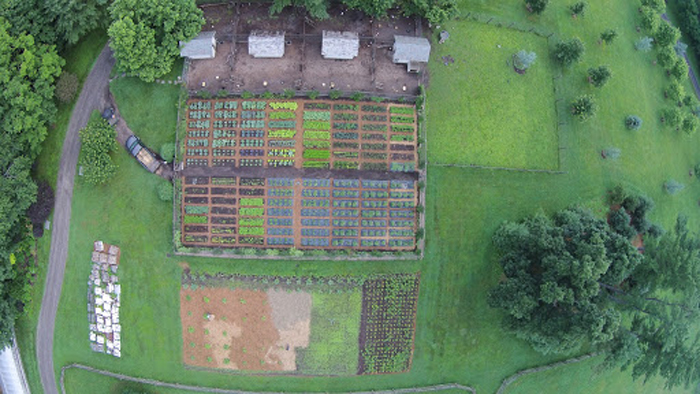
There’s been a lot of discussion and a tremendous amount of speculation lately about the nature of drones and their role in our society as useful tools and hobbyist toys.
Last year, while celebrating my birthday in Maine, I was given a drone fitted with a high-definition camera. After a quick introduction to the mechanics of operating the contraption and a few words about its idiosyncrasies, I loaded the appropriate app on my iPad and went down to the beach.
In just a few minutes I was hooked. In near silence, the drone rose, hovered, and dove, silently and surreptitiously photographing us and the landscape around us. The photos and video were stunning. By assuming unusual vantage points, the drone allowed me to “see” so much more of my surroundings than usual. The view I was “seeing” on my iPad with the help of the drone would have otherwise been impossible without the use of a private plane, helicopter, or balloon. With any of those vehicles, I would have needed a telephoto lens, and all of them would have made an unacceptable commotion on the beach. What’s more, I would not have been in the photos!
So much has been done in the past without drones, airplanes, hot air balloons, or even extension ladders. It is hard to imagine André Le Nôtre laying out the exquisite landscape designs for Vaux-le-Vicomte, and later the magnificent Château de Versailles, with no high hill to stand on, no helicopter to fly in, and no drone to show him the complexities of the terrain. Yet he did, and with extreme precision, accuracy, and high style.
Earlier, Henri IV drew up complicated plans for the immense and elegant redesign of Paris, capital of France. In England, Capability Brown somehow had the innate vision and perspicacity to reconfigure thousands of acres into country estates fit for royalty. He and Sir Humphry Repton invented an entirely new style of landscape design that had little to do with the grand châteaux of France. It became all about the “axis of vision” — relaxed, looming views of the distance that, without an aerial view, required the utmost in fertile imagination.
In the late 1800s, more people wanted the bird’s eye view of city and country and went to extreme lengths to rig up guy-wired telescoping towers, build extension ladders of dangerous lengths, and man hot air balloons, from which intrepid photographers could capture remarkable images—such as those of the Chicago Union Stock Yards and the U.S. Steel Corporation—from heights of 2,000 feet.
What about the Great Wall of China, or the Nazca Lines in southern Peru? I began reflecting on how the engineers and architects of the past accomplished so much without the modern tools we have at our disposal.
My mind started racing and I imagined all the different applications for my drone. I knew that every type of use had already been thought of by others (governmental agencies, businesses, Amazon.com, Google Maps), and I knew I could not even begin to fathom even a fraction of the social, ethical, and political challenges the widespread use of drones would create.
Do they raise legitimate privacy concerns? Should they be regulated? Should we have a national debate?
I don’t have all the answers. But I forged ahead, using a Parrot AR Drone 2.0, photographing my properties, a party, a hike in the mountains, and a day at the beach. I did my best to master the moves and angles that would result in most arresting pictures and video.

One of my farm workers used his drone, a DJI Phantom flying camera, to capture amazing images of my 153-acre farm in Bedford, New York. Suddenly we could see with astonishing clarity the layout of the open fields, the horse paddocks, the chicken coops, the greenhouses, the hay barn, the cutting gardens and henhouses, the clematis pergola, and the long allée of boxwood. The photos were so good I posted them to my blog on Marthastewart.com. The response was phenomenal!
Henry Alford wrote a satirical essay about me and my drones in The New Yorker that was really funny but missed the point about why I love my drone. Drones can be useful tools, and I am all about useful tools. One of my mottos is “the right tool for the right job.”
A few facts:
The hobbyist drones we can all purchase online or in stores are technically known as UAS: unmanned aerial systems. Many can fly up to 900 feet. With practice, a novice photographer can take really great photos.
The shots of my farm were breathtaking and showed not only a very good landscape design — thanks to the surveyors and landscapers who worked with me on the overall vision, much as le Notre worked with Louis XIV — they also showed me what more I can do in the future, and revealed unexpected beauty.
An aerial shot of the vegetable garden looked very much like my Peter Rabbit marzipan embellished Easter cake, which was designed without the help of a drone.
Martha Stewart, founder of Martha Stewart Living Omnimedia and Emmy Award-winning television show host, entrepreneur and bestselling author, is America’s most trusted lifestyle expert and teacher.
More Must-Reads from TIME
- Why Trump’s Message Worked on Latino Men
- What Trump’s Win Could Mean for Housing
- The 100 Must-Read Books of 2024
- Sleep Doctors Share the 1 Tip That’s Changed Their Lives
- Column: Let’s Bring Back Romance
- What It’s Like to Have Long COVID As a Kid
- FX’s Say Nothing Is the Must-Watch Political Thriller of 2024
- Merle Bombardieri Is Helping People Make the Baby Decision
Contact us at letters@time.com